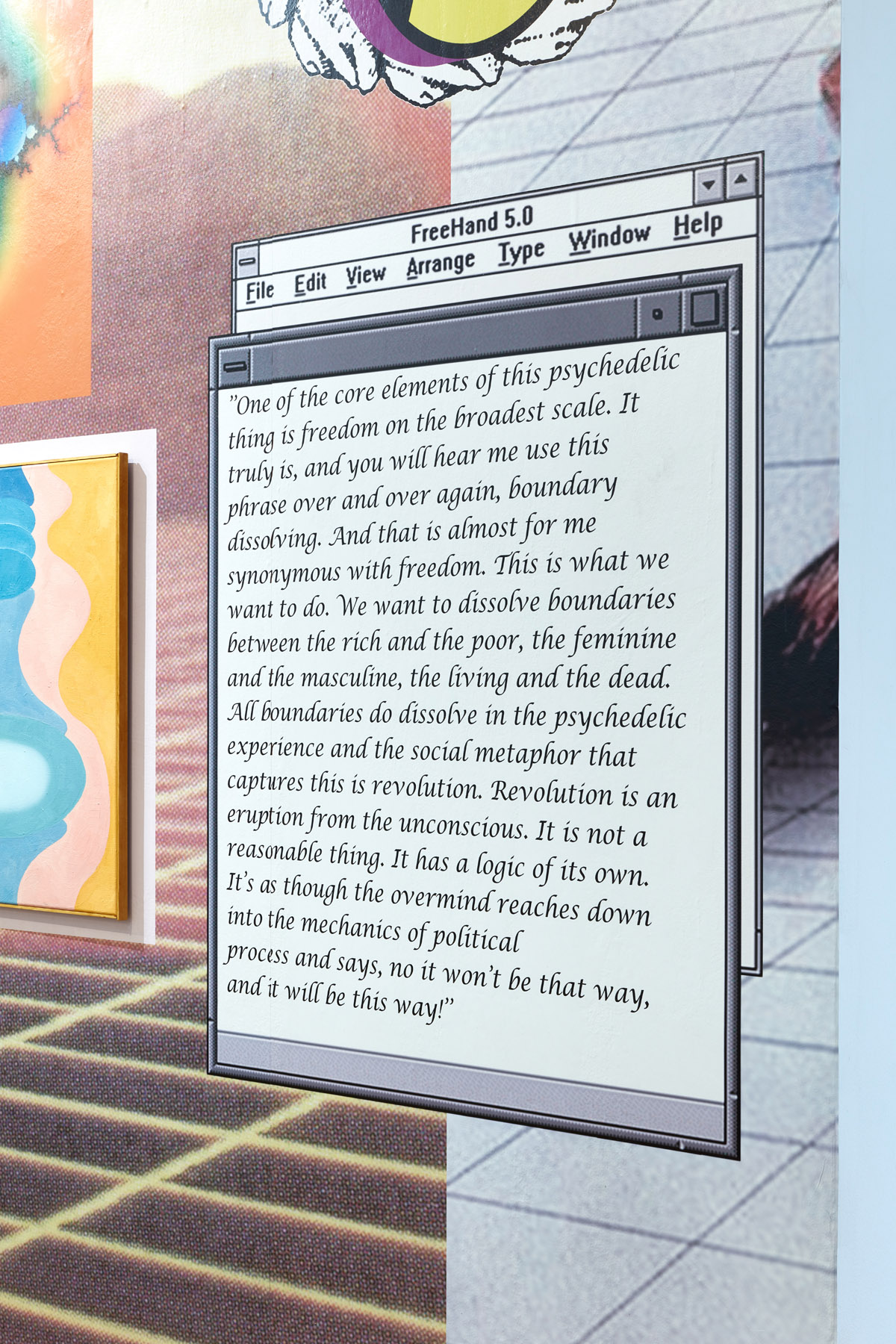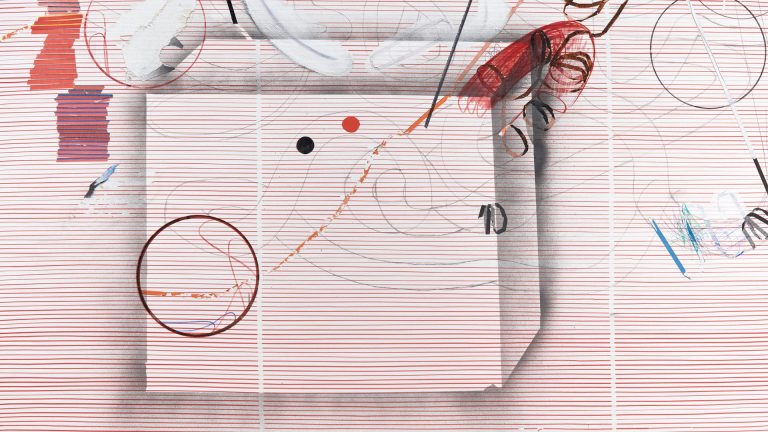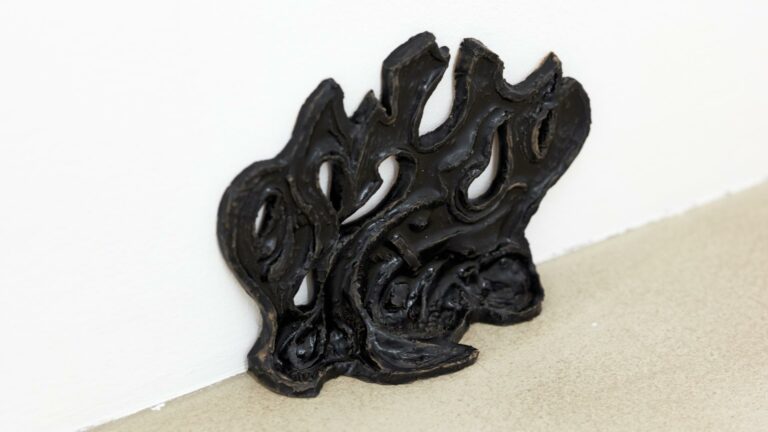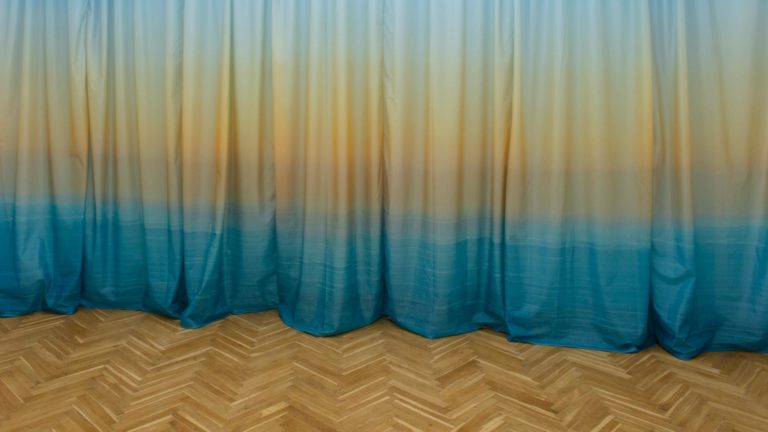Artist: Mark Fridvalszki
Exhibition title: Future Perfect – Befejezett jövő
Curated by: Barnabás Zemlényi-Kovács
Venue: ICA-D Institute of Contemporary Art, Dunaújváros, Hungary
Date: November 6, 2020 – February 27, 2021
Photography: Dávid Biró / all images copyright and courtesy of the artist and ICA-D Institute of Contemporary Art
“As I moved among these secret ruins, I found myself wondering what the inhabitants of that lost future would think of the world I lived in.”
(Wiliam Gibson: The Gernsback Continuum, 1981)
Future Perfect is a comprehensive overview, completed with fresh works, of the archeo-futurological impulse in the art of Mark Fridvalszki. Works focusing on the future-ruins of the years of sixty-eight and eighty-nine are shown together for the first time, marking the starting and endpoint of an epoch that British cultural theorist Mark Fisher called Popular Modernism. According to Fisher, in the proliferating countercultures during these decades, built on the stable social and economical basis of the welfare states, “the elitist project of modernism was retrospectively vindicated”, democratizing its future-oriented, experimental and innovative spirit.
The neoliberal corrosion of collective imagination, however, led to “the slow cancellation of the future” (Franco ‘Bifo’ Berardi), and the popularity of modernism – as well as the modernization of Pop – seems just as far and utopian today as it was before the Sixties. The nostalgia that pervades the exhibition is thus not for the Sixties or the Nineties but the Future: contrary to conservative-reactionary nostalgia, ‘critical nostalgia’ summons the exorcised ghosts of Modernity in order to burst out of our claustrophobic Present with the wide horizons of Popular Modernism. Fridvalszki inverts the classic attempts to interrogate the meaning and relevance of the countercultural forces of ‘68 and ‘89, the heritage of experimental pop music from modern jazz to jungle, the socio-political ambitions of abstraction or the intellectual-imaginational imperatives of the avant-garde. The real question is that what the rebellious youth of ‘68 and ‘89, those avant-garde artists and radical philosophers would think about us, our own ‘post-futuristic’, retro-dominated, perspectiveless age.
*
Echoing socmodernist murals, 1968–69: A Time Odyssey is an attempt to demonstrate the revolutionary energy of two consecutive years that saw an arguably unparalleled proliferation of breathtakingly diverse and groundbreaking art. Alongside the still vibrant Pop art and Minimalism, it was the heyday of Land art and Op art, the Italian Arte Povera and the Japanese Mono-ha, or the Californian Light and Space movement; Conceptual Art was already in its prime, together with Feminist art, Post-painterly abstraction, Hyperrealism, Performance art, Actionism, and New media art… A collaborative work of the curator and the artist, the former’s virtual collection of 690 works from ‘68 and ‘69 by 320 artists found its form in a monumental mural, an anachronistic as well as futuristic monument, just like the monolith in Kubrick’s 1968 sci-fi masterpiece.
Tam Tam Stool, also created in 1968 by Henry Massonnet, is an icon of the golden age of experimental design that played an essential role in bringing the futuristic into everyday life. An exemplary product of the revolution of injection moulding, this cheap, light, hyper-minimalist yet multifunctional chair was one of the few Space Age furniture that were immensely mass-produced both in Western and Eastern Europe. Paraphrasing Brâncuși’s Endless Column, ‘Perfect Lines, Perfect Forms’ is a memento of the radical redistribution of modernism’s formal ideals in an age where the future seemed to belong to the majority.
An Out of This World Event I (Rehaunted), based on Fridvalszki’s first work in his archeo-futurological period, is a synthesising vision of the countercultures of ‘68 and ‘89, equally built around psychedelia, experimental visuality and music, during two paradigm-shifting periods in politics, economy, culture, and technology. The hippies of the ‘Summer of Love’ on the West Coast meet here with the ravers of the ‘Second Summer of Love’ in Britain; Superstudio’s grid surface, representing a social structure of complete freedom and equality, lives on in the light grid motif of the Eighties and the Nineties; a psychedelic 1969 painting by Wojciech Fangor is mixed with the Mandelbrot set, used in hypnotic rave visuals; Pink Panther, a Sixties embodiment of coolness, finds his Nineties equivalent, Fido Dido; applied abstract motives float together with the elements of early rave flyers and a Macromedia Freehand design catalogue from 1995. It is as if Fridvalszki’s desire was to compress so much utopian energy from ‘68 and ’89 into a single entity that it would reach the point of explosion and fructify our futureless present.
-Barnabás Zemlényi-Kovács
*
Mark Fridvalszki (1981, Budapest; lives and works in Berlin) graduated from the Academy of Fine Arts in Vienna in 2011 and was a post-graduate Meisterschüler student at the Academy of Fine Arts in Leipzig. Fridvalszki is the co-initiator and graphic editor of the publishing project and cross-disciplinary movement Technologie und das Unheimliche (T+U, since 2014).
Mark Fridvalszki participated in various exhibitions and art events, such as Kunsthalle Exnergasse Vienna (2020), Horizont Gallery Budapest (2019, 2020), TIC Gallery Brno (2020), Karlin Studios Prague (2019), Ludwig Museum Budapest (2019), Hungarian National Gallery (2019), Miart (2019), Paris Internationale (2018), Modem in Debrecen (2018), D21 Kunstverein Leipzig (2018), OFF Biennale (2017), BWA Sokół Nowy Sącz (2016), Vienna Contemporary (2017, 2016), Meetfactory Gallery Prague (2016), Trafó Gallery Budapest (2016), Vorspiel Transmediale Berlin (T+U, 2016), Akademie Schloss Solitude Stuttgart (T+U, 2015), Kisterem Gallery (2015), Lehrter 17 Berlin (2015), and residency in Futura Prague (2019), Meetfactory Prague (2015) among many others.
Thanks to: Nóra Deák, Gabriella Zsinka



































